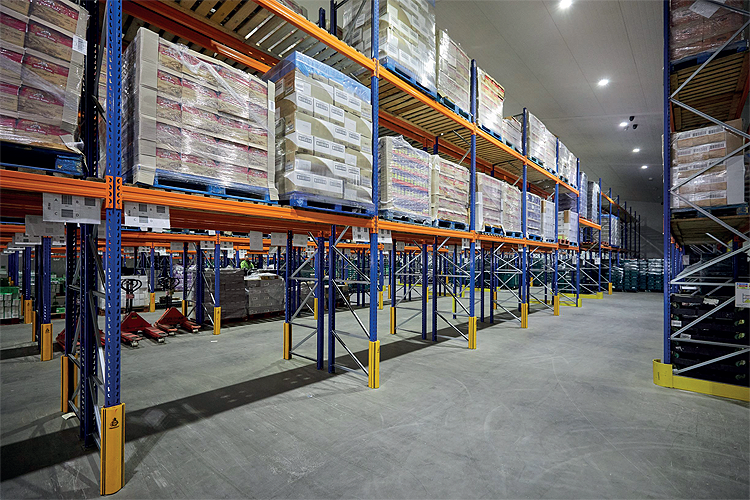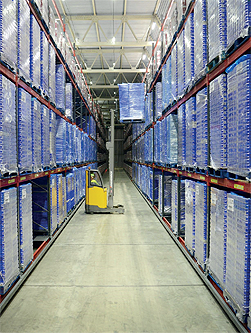
Zero hour
We live in a warming world, and I have no doubt that the need for temperature-controlled food storage and distribution will increase over the coming decades. A reliable cold chain is crucial for feeding people, central to the operation of businesses across the food industry and key to reducing the significant carbon impact of food waste, but the current technologies that enable us to keep temperatures low in storage or on the move require significant energy use and emissions. This creates something of a conundrum: how can we expand the benefits of a robust and resilient cold chain while simultaneously working to reach net zero?
How our industry responds to the net zero challenge will be important across the food chain and beyond. We have seen several major food retailers commit to reaching their own net zero targets within stretching timeframes: consumers are coming to expect far greater environmental responsibility, and UK Government has committed to law to become a Net Zero economy by 2050. Cold storage and temperature-controlled transport act as a lynchpin between a range of sectors including agriculture, health, manufacturing, logistics and retailing, so an energy efficient, low emission cold chain will be crucial in enabling both the food industry and the nation as a whole to deliver against net zero ambitions.
 Similarly, collaboration and integration with customers, partners and Government is essential for our industry to accelerate its own progress towards net zero.
Similarly, collaboration and integration with customers, partners and Government is essential for our industry to accelerate its own progress towards net zero.
Like much of the UK food industry, the cold chain is in the midst of a period of rapid change. For several years it has been growing fast, attracting major investment from the UK and from abroad. Now, the pandemic has shifted customer needs while Brexit is dramatically changing supply chain relationships. At the same time long-standing recruitment challenges have reached a crisis point, particularly with regards drivers. But of all these trends and shifts in how the cold chain operates, the drive for Net Zero is the primary factor that will shape major change for both the cold chain and the wider food industry for decades to come.
Defining what a net zero cold chain should mean in practice is certainly challenging. The industry is made up of different types of businesses, often operating across international borders and delivering a wide range of bespoke and flexible services. Where should the measurement for net zero begin and end in a cold chain, how do our ambitions relate to those of our customers and partners, and when will we know we have succeeded?
These are just some of the questions that form the basis of the Cold Chain Federation’s Net Zero Project which began in 2020. The project aims to clarify the UK cold chain’s carbon starting point; to identify what we should actually be trying to achieve; and to examine the opportunities, challenges and barriers for specific elements of the industry and for the UK cold chain as a whole. The aim is to use these insights to set out an ambitious but realistic roadmap for how we can reach the end goal.
Our project is still in its early phases but it is clear that the changes that will be needed in our industry include not just infrastructure and equipment, but also to some extent culture and first principles. Applying energy savings alone will not get us to net zero and while there are good opportunities for short term incremental savings, in the longer term we must look at how businesses interact across the cold chain and across the wider food industry. Net zero must include all the different cold chain roles from those designing and installing the infrastructure, to logistics managers, and those operating and maintaining equipment. In time we will need to reduce energy demand for cooling through building design and behavior change, and we will need to harness waste heat and cold as well as developing new ultra-efficient systems.
There are a lot of challenges, but the prospect is exciting too: a net zero approach largely goes hand in hand with efficiency, innovation and new opportunity. Off-grid renewable energy generation, automation and low carbon vehicles have already become important features of our industry and with net zero at the heart of their business strategies, cold chain businesses will be focusing investment more and more towards energy efficient equipment, modernizing buildings, and trialing and adopting new low carbon technologies.
The other crucial element of the Cold Chain Federation’s Net Zero project is to identify and demonstrate how Government can most effectively support our industry’s efforts to transition towards a net zero cold chain for food in the UK. One of the roles for any government is to understand the future need for cold chain and collaborate with the industry to ensure we can meet the environmental challenges without compromising essential societal needs. We will be pushing Government to work with us to find system-level solutions, remove policy barriers and provide direct support for innovation and net zero skills.
The next stage of the Cold Chain Federation’s Net Zero Project will focus on developing roadmaps for how cold chain businesses can work with customers and Government to transition to a net zero cold chain. It is a real challenge but by tackling these difficult choices and complex issues now, the cold chain and our food industry customers can be sure that progress and investment now is taking us in the right direction to achieve net zero by 2050.

Cold Chain Federation
Shane Brennan is the Chief Executive of the Cold Chain Federation, the trade association for businesses that operate temperature-controlled storage and distribution operations in the UK. It represents more than 250 companies that operate from more the 500 warehouses (40m m3) and over 50,000 refrigerated vehicles.
For further information, please visit: www.coldchainfederation.org.uk